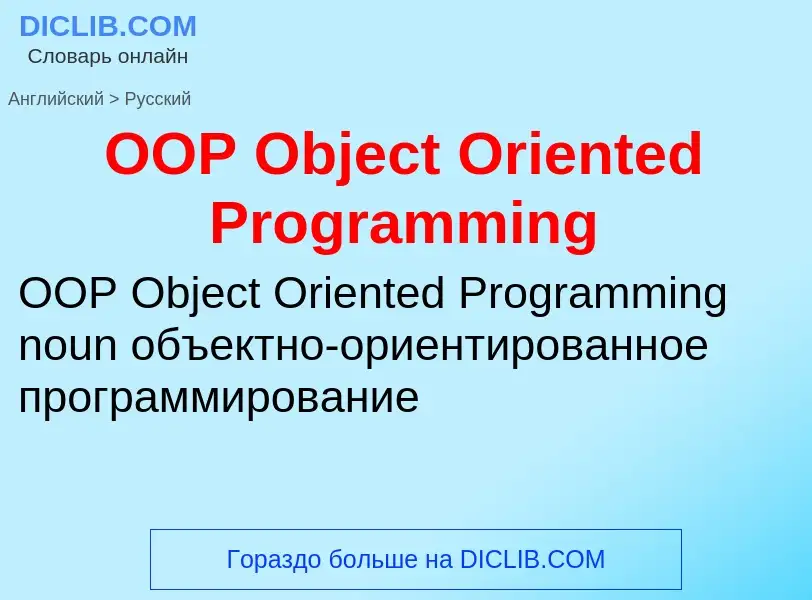ترجمة وتحليل الكلمات عن طريق الذكاء الاصطناعي ChatGPT
في هذه الصفحة يمكنك الحصول على تحليل مفصل لكلمة أو عبارة باستخدام أفضل تقنيات الذكاء الاصطناعي المتوفرة اليوم:
- كيف يتم استخدام الكلمة في اللغة
- تردد الكلمة
- ما إذا كانت الكلمة تستخدم في كثير من الأحيان في اللغة المنطوقة أو المكتوبة
- خيارات الترجمة إلى الروسية أو الإسبانية، على التوالي
- أمثلة على استخدام الكلمة (عدة عبارات مع الترجمة)
- أصل الكلمة
OOP Object Oriented Programming - ترجمة إلى إنجليزي
общая лексика
OOP
объектно-ориентированное программирование, ООП
популярное направление в развитии программирования, заключающееся в представлении данных в виде объектов, обладающих определёнными свойствами и содержащих внутри себя как структуры данных, так и процедуры для работы с ними. ООП имеет развитый аппарат и поддерживается большинством современных языков программирования. Достоинство использования объектной модели в том, что она уменьшает семантический разрыв между предметной областью и программой, а также позволяет писать программы, содержащие на 30% меньше строк исходного текста, что повышает возврат инвестиций. Недостаток - высокая стоимость обучения объектно-ориентированным методам разработки, таким как UML
общая лексика
OOL
объектно-ориентированный язык [программирования]
язык, поддерживающий ООП
Смотрите также
تعريف
ويكيبيديا
In software systems, encapsulation refers to the bundling of data with the mechanisms or methods that operate on the data. It may also refer to the limiting of direct access to some of that data, such as an object's components. Encapsulation allows developers to present a consistent and usable interface which is independent of how a system is implemented internally. As one example, encapsulation can be used to hide the values or state of a structured data object inside a class, preventing direct access to them by clients in a way that could expose hidden implementation details or violate state invariance maintained by the methods.
All object-oriented programming (OOP) systems support encapsulation, but encapsulation is not unique to OOP. Implementations of abstract data types, modules, and libraries, among other systems, also offer encapsulation. The similarity has been explained by programming language theorists in terms of existential types.

![C]] (black) competed for the top position. C]] (black) competed for the top position.](https://commons.wikimedia.org/wiki/Special:FilePath/Tiobeindex.png?width=200)
